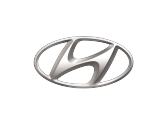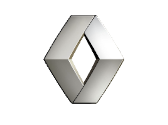Which brand are you looking for?

Lynk & Co
Lynk & Co
Available parts: 5

Alfa Romeo
Alfa Romeo
Available parts: 6
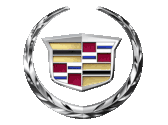
Cadillac
Cadillac
Available parts: 1

Chevrolet
Chevrolet
Available parts: 4

Chrysler
Chrysler
Available parts: 3

Cupra
Cupra
Available parts: 1

Dacia
Dacia
Available parts: 8

Dodge
Dodge
Available parts: 1

DS
DS
Available parts: 5

Ferrari
Ferrari
Available parts: 1

Fiat
Fiat
Available parts: 9

Ford Usa
Ford Usa
Available parts: 3

Honda
Honda
Available parts: 10

Isuzu
Isuzu
Available parts: 2

Iveco
Iveco
Available parts: 2

Jeep
Jeep
Available parts: 2

Lada
Lada
Available parts: 1

Land Rover
Land Rover
Available parts: 6

MG
MG
Available parts: 4
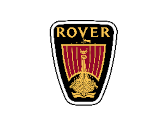
Rover
Rover
Available parts: 1

Saab
Saab
Available parts: 7
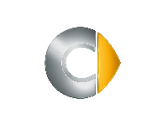
Smart
Smart
Available parts: 2

Ssangyong
Ssangyong
Available parts: 2

Subaru
Subaru
Available parts: 3

Suzuki
Suzuki
Available parts: 6
Water pump: function, defects and replacement of the pump in the car The wate
The water pump is an important component of most modern cars with internal combustion engines. As the heart of the coolant circuit, the pump ensures a constant flow of coolant. Due to the constant load, the water pump can wear out over the years or break down due to other causes. Then various symptoms point to a defect in the coolant pump.
To prevent damage to the vehicle’s engine, water pumps should be replaced with an original pump at the first sign of a defect. Find out now how the water pump works, how to recognise a defect and where you can buy a suitable OEM spare part at a reasonable price.
Function of the water pump in the car
In order for the car’s internal combustion engine to be cooled effectively, modern vehicles have a water cooling system with a corresponding pump. Coolant channels integrated into the engine block are flowed through by the cooling water to quickly dissipate the heat generated during engine operation. The engine block, coolant pump and vehicle radiator make up the cooling circuit.
The water pump, also known as the coolant pump, constantly pumps the coolant or cooling water through the cooling circuit. In this way, the hot coolant is conveyed from the engine block to the radiator at the front of the vehicle, where it can cool down quickly. The now cooled cooling water flows through the closed cooling circuit back to the engine to cool it down again. If necessary, it also flows through the heat exchanger of the heater.
Water pump defective – these are the consequences
If the vehicle’s water pump is defective, this has a significant impact on the function of the cooling system. This is because without the pump, the water in the cooling circuit can no longer be kept circulating. If the water is no longer led by the pump to the engine radiator, the engine will quickly overheat.
However, the water pump in internal combustion engines does not always break down from one moment to the next. Much more often, symptoms appear beforehand that indicate that the coolant pump will soon be defective. If, for example, the first leaks appear, there is often still enough time to replace the water pump.
Common symptoms of a defective coolant pump
- Loss of coolant: Water pumps often leak because sealing elements such as gaskets are worn. Sometimes stains appear under the car, which are conspicuously coloured like the coolant. In addition, the water level in the expansion tank drops when the pump is leaking.
- High coolant temperature: If the pump fails or stops working properly, the temperature of the coolant often rises rapidly. The engine can also overheat if the water pump stops working. The driver of the car notices the defect on the temperature display in the vehicle cockpit or thanks to a warning message in the display.
- Unusual noises: Defective water pumps tend to make noise, especially when mechanically damaged. Sometimes the driver will then notice grinding or grating noises. Worn sealing elements of the pump can also cause noises such as squeaking or buzzing, but a worn belt can also be responsible for this.
- Heater malfunction: Since the heat exchanger of the heater is directly integrated into the cooling circuit in many vehicles, signs of a defective water pump can also be found here. Thus, it can happen that the heating function of the car fails if the coolant is no longer pumped correctly through the circuit.
Why is the water pump broken?
Water pumps in cars are usually maintenance-free and designed to run for a long time. However, the pumps for the coolant can wear out, especially in older vehicles or in engines that are subjected to a lot of stress. Damage to the water pump can also lead to failure.
The most common causes of defective water pumps
- Wear on the seals: The water pump has various seals and other sealing elements that seal the shaft and housing, for example. Due to thermal loads, friction and because of hardening, the seals wear out with increasing vehicle age and mileage.
- Contaminated cooling water: Due to foreign bodies in the cooling water, the inner workings of pumps can easily be damaged. Dirt or other particles can enter the cooling circuit when refilling water or due to the defect of other components. Here, the foreign bodies can, for example, damage the impeller inside the water pump.
- Mechanical defect: Coolant pumps are equipped with mechanically acting parts, which in turn can break down. Thus, depending on the model and design of the pump, the drive pinion or the pulley can wear out, as can the pump impeller inside. Foreign bodies in the coolant, corrosion, material fatigue or faults in the pump drive are often to blame.
Buy a suitable water pump
If the water pump of an internal combustion engine is defective, the component usually cannot be repaired. Replacing the pump with a suitable spare part is therefore unavoidable. You should not wait too long before replacing the pump, as a complete failure of the water pump can also result in engine damage.
Suitable water pumps for your vehicle as well as numerous other original spare parts can be found clearly listed at Autoparts24.eu. All you need to do is enter the vehicle model and manufacturer, or alternatively the key numbers from the vehicle registration document. High-quality used water pumps from car recycling are often considerably cheaper than other OEM parts. The clear presentation in the Autoparts24.eu shop also enables a quick price comparison.
Three tips for changing the water pump
- Replace the timing belt at the same time: In some vehicle models, the water pump is driven by the timing belt, which also controls the valves in the cylinder head. Since the belt has to be removed anyway to replace the pump, it should be replaced right away with a new timing belt.
- Buy used parts: Water pumps are sometimes particularly cheap if they are bought as used spare parts. Here, only good quality from a reliable source should be used. This component should be original from the vehicle manufacturer, as well as being bought intact and with the lowest possible mileage.
- Carry out a test run: After changing the cooling water pump, new coolant should be filled up to the maximum mark. It is then a good idea to test-run the engine and observe the coolant level in the expansion tank. It is not uncommon for air pockets to form in the cooling circuit when the pump is replaced, which require a refill of coolant.
Increase the service life of the water pump
.
Even better than replacing the water pump at a low cost is to extend the life of the water pump in a simple way. For example, you should make sure that only clean cooling water with the approved additives is filled in. The antifreeze approved by the manufacturer often also serves as corrosion protection. Regular overloading of the engine should also be avoided, as should a loose drive belt.
Spare parts for sale of type by car brands
Our more than 120 car chippers now have more than 2206 pieces of the type for sale on Autoparts24 and here you can see how the used car parts are distributed for each car brand. E.g. you can see that there are 387 pcs. for sale right now of the VW brand, which is equivalent to 18 % of all used spare parts in the category.
Sold spare parts of the type by car makes
Based on our insight into more than 120 car chippers warehouses, we can see how the sales of spare parts of the type of rearview mirror are distributed among the car brands. E.g. you see that 0 pieces have been sold of the 519 , which corresponds to 0 % of all used spare parts sold in the category 18
Prices on spare parts of the type
Here you can see how our car chipper sets the price of a spare part with the OEM number . So you have the opportunity to get an impression of the price of a spare part with OEM number , and thus become wiser about which car parts are cheap and expensive respectively. The average price of a spare part with OEM for sale on Autoparts24 is 549 EUR.
Prices of sold spare parts of the type
Here you can see the price of the spare parts of the type that our car breakers sell. I.e. you can estimate whether most parts are being sold at the cheap end or the expensive end of the scale. Compared to the graph above, showing the offer price of the spare parts, you can evaluate the relationship between supply and demand for the auto spare parts of the type sbr />
The average price of a spare part of the type from one of our car chippers on Autoparts24 is 497 EUR





